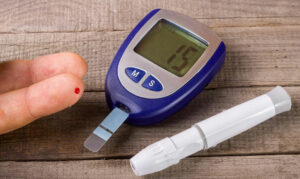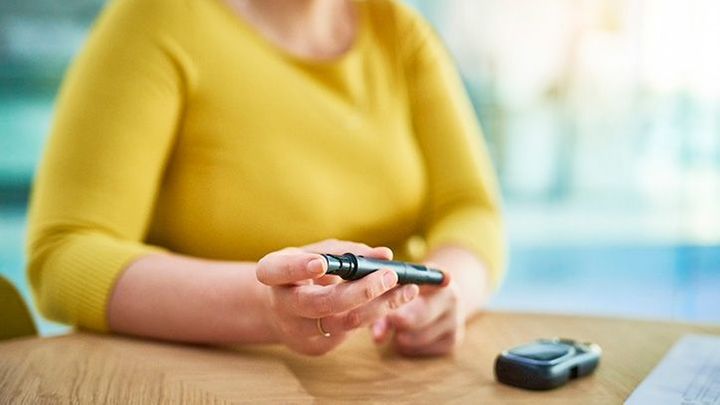Experiencing a sudden drop in blood sugar can be a concerning and uncomfortable experience, often referred to as hypoglycemia. It’s a condition that can affect anyone, but it’s particularly common among individuals with diabetes. Understanding the symptoms, causes, and effective management strategies for hypoglycemia is crucial for maintaining overall health and well-being. This comprehensive guide aims to enlighten you about the various symptoms of blood sugar drop, and practical ways to manage them effectively.
Contents
What Are The Symptoms Of Blood Sugar Drop?
 A blood sugar drop, medically known as hypoglycemia, can manifest through a variety of symptoms that can affect different people in different ways. The symptoms often develop quickly and can vary in intensity. Here are some of the common symptoms of blood sugar drop:
A blood sugar drop, medically known as hypoglycemia, can manifest through a variety of symptoms that can affect different people in different ways. The symptoms often develop quickly and can vary in intensity. Here are some of the common symptoms of blood sugar drop:
Physical Symptoms
- Shaking and Tremors: One of the earliest signs of low blood sugar is shaking or trembling, often felt in the hands. This symptom occurs because the body is trying to increase blood sugar levels by releasing adrenaline.
- Sweating: Even in the absence of heat or physical exertion, a person experiencing hypoglycemia may break into a cold sweat. This is another adrenaline-induced response.
- Hunger: Intense hunger or the feeling of an empty stomach is a common symptom, as the body signals the need for more glucose.
- Dizziness and Light-headedness: When the brain doesn’t receive enough glucose, it can lead to feelings of dizziness or light-headedness. Because the brain is one of the most glucose-dependent organs in the body.
- Weakness and Fatigue: Low blood sugar can result in a lack of energy and a feeling of weakness or fatigue since glucose is a primary energy source for the body.
Cognitive and Emotional Symptoms
- Confusion and Difficulty Concentrating: Hypoglycemia can impair cognitive functions, leading to confusion or difficulty in focusing, making decisions, or performing complex tasks.
- Irritability and Mood Swings: Blood sugar drops can significantly affect mood, often resulting in irritability, anxiety, or even sudden mood swings.
- Headaches: A lack of sufficient glucose can trigger headaches, which can range from mild to severe.
- Vision Problems: Temporary vision issues such as blurriness or double vision can occur, as the eyes also rely heavily on glucose to function properly.
Severe Hypoglycemia Symptoms
- Seizures or Convulsions: In severe cases, a person may experience seizures or convulsions due to the drastic impact of low glucose on the brain.
- Loss of Consciousness or Coma: Extreme hypoglycemia can lead to loss of consciousness or coma, necessitating immediate medical attention.
Unusual Symptoms
- Heart Palpitations: Some individuals may experience a rapid or irregular heartbeat.
- Numbness or Tingling: A sensation of numbness or tingling, particularly around the mouth or in the extremities, can be a symptom.
- Behavioral Changes: Uncharacteristic behavior, such as aggression or appearing intoxicated, might be observed in someone experiencing a significant drop in blood sugar.
It’s important to note that symptoms can vary from person to person and might not always be immediately recognized as hypoglycemia. Individuals with diabetes, particularly those who frequently experience low blood sugar levels, may develop a condition known as hypoglycemia unawareness, where they become less sensitive to the initial symptoms. This makes regular monitoring of blood sugar levels crucial.
What Does It Feel Like When Your Blood Sugar Drops?
 When your blood sugar drops, a condition known as hypoglycemia, the experience can be both uncomfortable and alarming. The symptoms often come on quickly and can vary in intensity from mild to severe.
When your blood sugar drops, a condition known as hypoglycemia, the experience can be both uncomfortable and alarming. The symptoms often come on quickly and can vary in intensity from mild to severe.
Initially, you might start to feel shaky and nervous, as if you’re experiencing extreme anxiety or fear, but without an apparent reason. This shaking is usually most noticeable in your hands. Alongside the shakiness, there’s often an intense feeling of hunger, far stronger than your regular hunger pangs. It’s a deep, gnawing sensation that makes you crave quick sugars or carbohydrates, almost like the hunger you feel after missing a meal or two.
As the blood sugar level continues to fall, physical symptoms can intensify. You may begin to sweat profusely, experiencing cold chills despite being in a warm environment. This sweating is often accompanied by feelings of weakness or fatigue. Ultimately, making even simple tasks feel overwhelming and exhausting.
Emotionally, hypoglycemia can lead to irritability or mood swings. You might find yourself snapping at people for no reason or feeling an uncharacteristic surge of emotions. It’s a bit like the moodiness one might experience from severe sleep deprivation.
Understanding these symptoms and how they manifest is crucial, especially for individuals with diabetes or those prone to blood sugar drops. Being able to recognize the early signs of hypoglycemia is key to managing it effectively and avoiding more serious health risks.
What Is Normal Blood Sugar By Age?
Normal blood sugar levels can vary slightly depending on age, particularly in children and older adults. However, it’s important to note that the reference ranges for blood sugar levels are generally consistent across different age groups, especially for adults. The American Diabetes Association provides general guidelines that are commonly used. These levels are measured in milligrams per deciliter (mg/dL).
Children and Adolescents
- In children without diabetes, blood sugar levels are generally similar to those of adults.
- Fasting (not eating for at least 8 hours) blood sugar levels should be between 70 to 100 mg/dL.
- Postprandial (after eating) blood sugar levels in children can vary, but generally, a level less than 140 mg/dL is considered normal.
Adults
- For adults without diabetes, normal fasting blood sugar levels are between 70 to 99 mg/dL.
- Postprandial blood sugar levels for adults should be less than 140 mg/dL two hours after eating.
Older Adults (Seniors)
- In older adults, especially those over 65, slightly higher blood sugar levels might be acceptable, depending on overall health, the presence of other conditions, and the risk of hypoglycemia.
- Some guidelines suggest that for seniors, particularly those with other health issues or who are at risk of hypoglycemia, a fasting blood sugar level of up to 126 mg/dL may be acceptable. However, this should be individualized based on the health status and in consultation with a healthcare provider.
It’s important to remember that these ranges are general guidelines. Individual factors like specific health conditions, medication use, and overall health can influence what is considered a normal or target blood sugar level for a person.
What To Do Immediately When Blood Sugar Drops?
 When blood sugar drops, a condition known as hypoglycemia, it’s crucial to act quickly to bring your levels back to a safe range. Here’s what to do immediately:
When blood sugar drops, a condition known as hypoglycemia, it’s crucial to act quickly to bring your levels back to a safe range. Here’s what to do immediately:
Consume Fast-Acting Carbohydrates
Sugar Sources: Eat or drink 15-20 grams of fast-acting carbohydrates. Examples include glucose tablets (usually available at pharmacies), 4 ounces (about 1/2 cup) of regular soda (not diet), fruit juice, or a tablespoon of sugar, honey, or corn syrup.
Candy: Some people use hard candies. If you choose this, be sure they’re not sugar-free and be aware of how many to consume to reach 15-20 grams of carbohydrates.
Wait and Check Your Blood Sugar
After consuming the carbohydrates, wait about 15 minutes and then check your blood sugar level again. This wait time allows the sugar to enter your bloodstream and start raising your blood sugar level.
Repeat if Necessary
If your blood sugar is still below 70 mg/dL or you still feel symptoms of hypoglycemia after the first 15 minutes, consume another 15-20 grams of fast-acting carbohydrates.
Have a Snack or Meal
Once your blood sugar is back to normal and you’re feeling better, if it’s going to be an hour or more before your next meal, have a small snack. This can help prevent your blood sugar from dropping again. This snack should include some carbohydrates and protein, like crackers with cheese or peanut butter, or half a sandwich.
Avoid Over-Treatment
While it’s important to act quickly, avoid overeating as it can lead to high blood sugar (hyperglycemia) afterward. Stick to the recommended 15-20 grams of carbohydrates initially.
Medical Identification
If you have a history of hypoglycemia, consider wearing a medical identification bracelet that indicates you have diabetes or are at risk for low blood sugar. This can be crucial in an emergency where you might be unable to communicate.
Remember, if you have diabetes or are at risk for hypoglycemia, it’s important to discuss your specific hypoglycemia action plan with your healthcare provider. This plan might include specific types and amounts of fast-acting sugars, considering your personal health status.
Conclusion
In conclusion, understanding and managing blood sugar levels is a vital aspect of maintaining good health, especially for those with diabetes or at risk of hypoglycemia. Recognizing the symptoms of blood sugar drop – like shakiness, sweating, intense hunger, and confusion – and knowing how to respond quickly and effectively with fast-acting carbohydrates is crucial. It’s also important to regularly monitor your blood sugar, adhere to a balanced diet, and consult with healthcare professionals for personalized advice.
By being informed and prepared, you can effectively manage your blood sugar levels and lead a healthier, more comfortable life. Do you want to get rid of diabetes? Join our online diabetes treatment program and reverse Diabetes naturally through lifestyle changes such as a Personalized Diet plan, Exercise, Yoga, dieticians, and health coaches.

